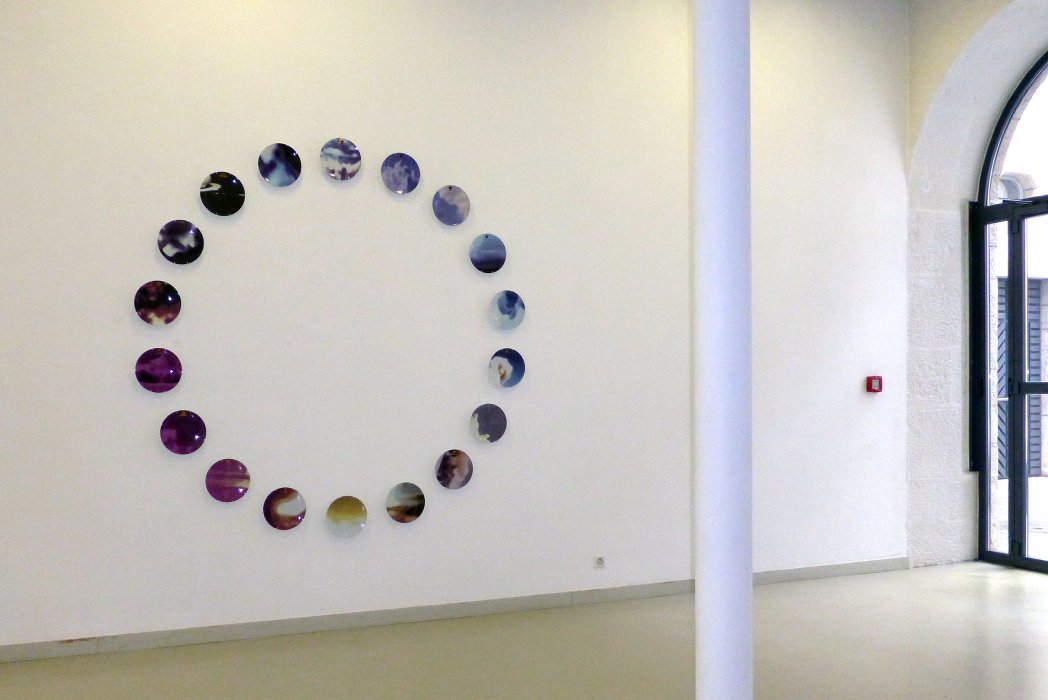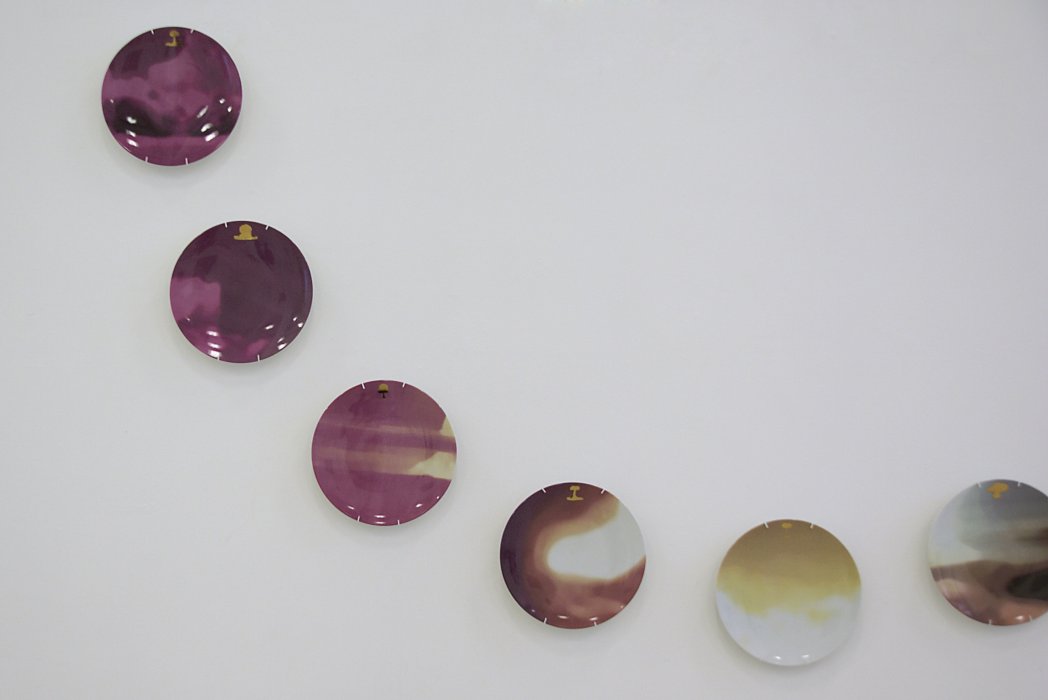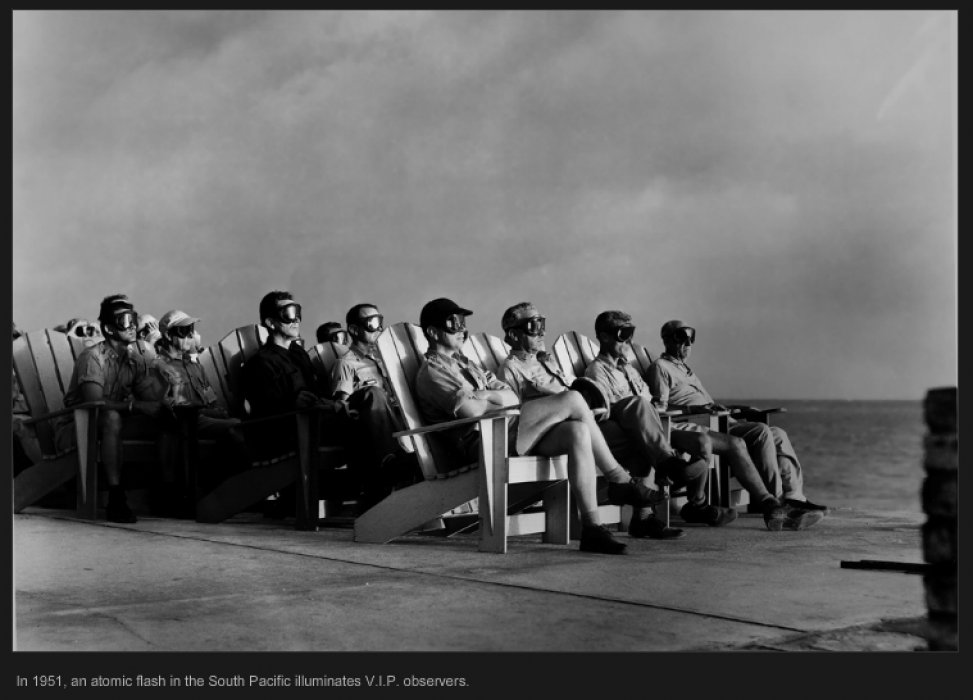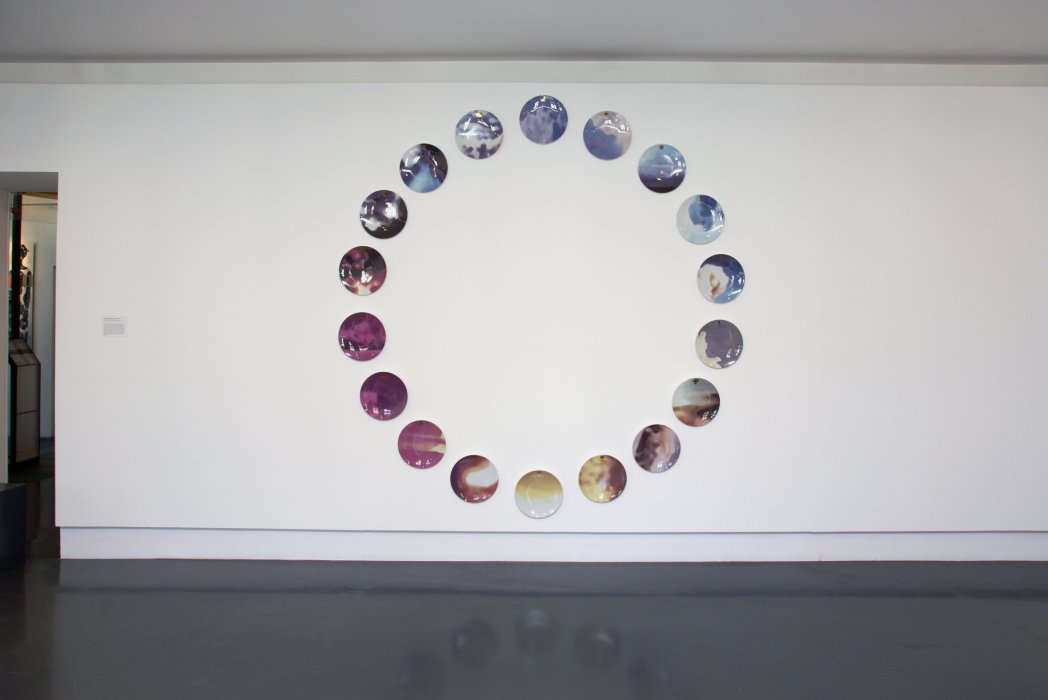





[...] Romeo, Apache, Galileo, Charlie [...]
La critique de notre rapport à l’image et à la société est à l’œuvre dans la nouvelle série intitulée [...] Romeo, Apache, Galileo, Charlie [...] (2011), qui propose de questionner notre fascination pour la forme et l’ésthétique du champignon atomique en même tant que notre répulsion à imaginer les effets d’une éventuelle catastrophe.
Ici les plats ne sont pas utilisés pour manger, comme dans Tellerstories*, mais pour « décorer », à la manière du 19ème siècle, l’intérieur tranquille
de la bourgeoisie occidentale enrichie par la maîtrise de la puissance nu- cléaire. La forme du champignon, dessiné en dorure, rappelle les blasons qui marquent les possessions des familles oligarchiques. Ici, le rapport entre nature et culture touche à l’extrême de la dévastation.
"Denis Pernet, curateur de l’exposition Helvètes vulcains – une sélection dans la collection du mudac enrichie de créations récentes, MUDAC, Lausanne/ CH, 2011"
At the center of this new series lies criticism of our relationship to the image and to society. On the one hand it questions our fascination with the beauty of in this instance atomic clouds, and on the other the vision wrought by our dread of the results of an imminent catastrophe.
The plates do not simply function as something from which to eat, but rather serve as decoration, as in the nineteenth century, in the tranquil interiors of a western bourgeoisie made rich by the creation and implementation of nuclear technology.
The plates show primarily a colorful fragment of the explosion and positioned on the upper rim, miniaturized in gold like a family crest, the entire form of the atomic cloud is printed. Here the relationship between nature and culture collides with the potential for complete annihilation.
"Denis Pernet, curator of the exhibition Helvetic Volcanos – a selection from the Collection MUDAC, expanded with current works, Lausanne 2011."
Die Kritik von unserem Verhältnis zum Bild und der Gesellschaft stehen im Zentrum dieser neuen Serie. Sie befragt einerseits unsere Faszination für die Schönheit der Atompilze und unser Grauen bei der Vorstellung einer möglichen Katastrophe.
Die Teller haben hier nicht die Funktion draus zu essen, sondern dienen als Dekoration, wie im neunzehnten Jahrhundert, in den friedlichen Interieurs des westlichen Bürgertums, reich geworden mit der Beherrschung der nuklearen Technik.
Auf den Tellern ist nur ein farbiges Fragment der Explosion zu sehen. Die ganze Form des Atompilzes ist verkleinert in Gold, wie ein Familienwappen, an den oberen Tellerrand gedruckt.
Die Beziehung zwischen Natur und Kultur erreicht hier das Extrem der Vernichtung.
Denis Pernet, Kurator der Ausstellung Helvètes vulcains